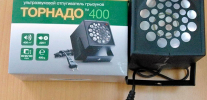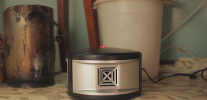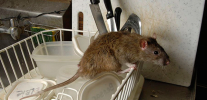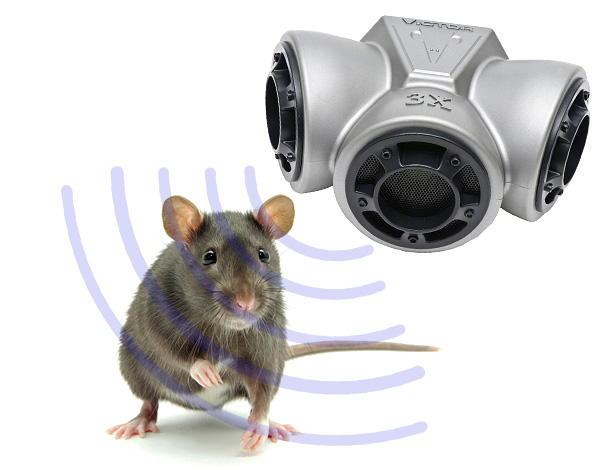
Today, between ordinary consumers and manufacturers of ultrasonic rodent repellers, there is still no debate about how ultrasound is generally effective against rats and mice. On the one hand, it has been scientifically proven and confirmed by many people in practice that ultrasound really helps against rats: a good repeller, when used correctly, allows rodents to be driven out of a fairly large area, protecting food and sanitary conditions in general.
On the other hand, there are very numerous cases when the ultrasonic agent did not provide the desired effect and turned out to be simply a useless dummy (sometimes quite expensive) - the pests remained in the protected area. Moreover, many reviews report that rats sometimes seem to pay no attention to a working device at all - they feed quietly and move very close to a seemingly working device. Here it is just right to conclude that the tool has no effect on the behavior of rodents.

So where is the truth? Does ultrasound help in the fight against rats and mice, or is this another advertising ploy? And if ultrasound really works, then how to use it correctly to get the desired effect? Let's figure it out ...
Ultrasound in the life of rodents
Let's start with the fact that ultrasound refers to sound vibrations with a frequency above 20,000 Hz, that is, above the threshold of audibility of an average person. People do not hear ultrasounds, but many other animals perceive them quite normally.
On a note
Only very few, especially sensitive people are able to hear sound with a frequency just above 20 kHz. Such high sounds are perceived as a very thin subtle squeak.
A gray rat can perceive sounds with a frequency of up to 40 kHz, a house mouse - up to 100 kHz. That is, what is absolutely inaudible for humans, for these animals is important sound information.
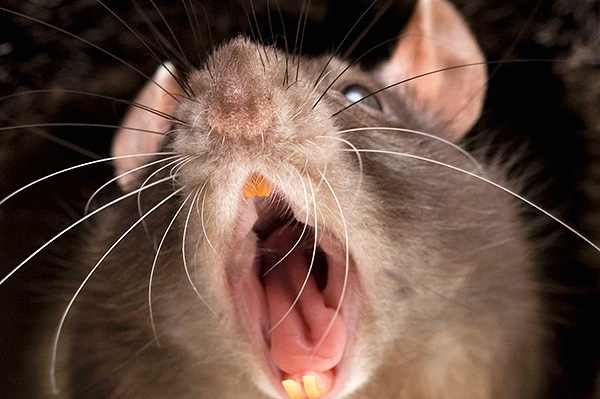
What is useful to know about ultrasound:
- The nature of ultrasound does not differ from the nature of other sounds, which means that it has the same characteristics: loudness (power), directivity, the ability to reflect and absorb. A small ultrasonic repeller, powered by a small finger-type battery, a priori cannot generate powerful ultrasonic radiation, and loud advertising statements about the tremendous effectiveness of such “kids” in areas of several hundred square meters can only cause a smile;
- Any sounds, including ultrasound, can tell the animal different information - neutral, unpleasant, frightening (danger message). That is, not every ultrasound will scare the rat, just as not every sound is given importance to every sound;
- Rats, mice and other rodents actively use ultrasound for communication - for example, they transmit signals to each other about help or danger.
It is interesting
One of the most “vociferous” among rodents is guinea pigs, they often shout a lot in the ultrasound range (inaudible to humans). The most silent ones are mice; they use ultrasound only in case of danger or in stressful moments (for example, during fights). Also, male mice “sing” in the ultrasound range, attracting females. The complexity of their songs is similar to that of birds. Interestingly, newborn rodent cubs actively communicate with their mother in the ultrasound language.
All this means that it is technically possible to create a device that will generate ultrasound, creating discomfort for rodents or causing them anxiety.The animals will avoid those places where they hear such sounds, and therefore, they can protect the whole room from them.
And the first thing you need to know to obtain such an effect is the optimal frequencies at which the corresponding ultrasonic installation should work.
What frequency ultrasounds scare away rats and mice?
According to the results of numerous experiments in laboratories, scientists have found frequency ranges that are frightening for rats and mice. So, when you feel pain, rats make sounds in the range of 25-28 kHz, when they smell a cat - in the range of 32-33 kHz. Frightened mice “squeak” in several ranges, the highest of which is at 96 kHz.
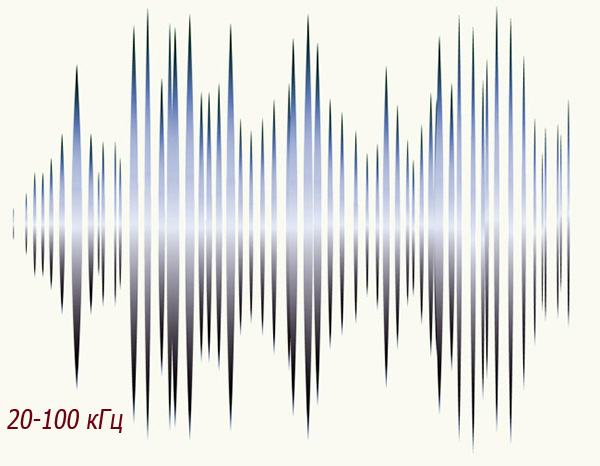
Nevertheless, experiments have shown that attempts to scare rodents with ultrasounds in narrow ranges are usually unsuccessful even with the most accurate implementation. Even if the desired effect is initially achieved, then rodents quickly get used to the source of the stimulus.
In addition, narrow-range ultrasound effective against rats will not scare mice, and vice versa. For these reasons, ultrasonic devices often operate on the principle of constant and random frequency changes. In this case, with a randomly changing frequency, the device will make sounds that are really uncomfortable for animals, which means that with a high probability the scaring will be successful.
This is the principle of operation of all effective ultrasonic devices from rats and other rodents: the device constantly changes the frequency of ultrasonic radiation. However, this is far from being realized in all devices available on the market today, which is one of the reasons for their inefficiency in practice. Moreover, some Chinese rodent repellers instead of emitting ultrasound squeak monotonously in the audible range - we don’t even have to talk about efficiency here.
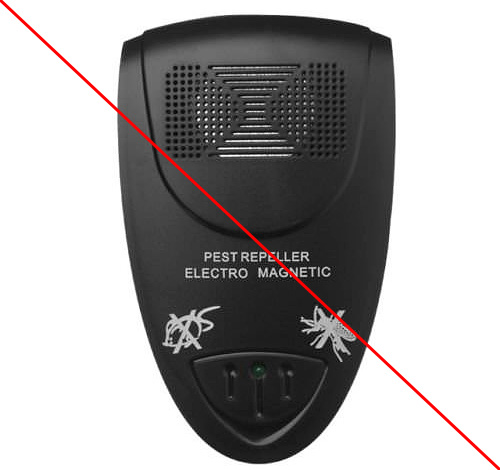
On a note
Amid the popularity of ultrasonic rodent repellers, people are sometimes interested and ask consultants in specialized stores regarding ultrasonic rat traps and mouse traps. So, it is important to understand that no ultrasonic device for catching rodents is on sale. Ultrasound does not destroy rats, but can only scare them away (with the correct implementation of the device).
The main characteristics of ultrasonic rodent repellers
Here are the main performance characteristics of ultrasonic repellers that you should pay special attention to:
- The protected area. The parameter shows in what area around the device rats and mice will not appear. It should be borne in mind that many manufacturers often overestimate this parameter. In addition, if there are a lot of upholstered furniture in the room that absorbs ultrasound, as well as obstacles from which the radiation will be reflected, the real effective area may be several times smaller;
- Sound pressure level, which determines how intense ultrasound the device generates and how much it will act on animals. The higher this value, the greater the efficiency can be expected from the device (ideally, the sound pressure level should be of the order of 100 dB or higher);
- Radiation pattern of the emitted ultrasound. In simple terms, this characteristic indicates how widely the sound will propagate around the device. A 360 ° radiation pattern indicates that sound propagates around the entire instrument. Testing of many rodent repellers on the market showed that many manufacturers mercilessly overstate this parameter as well;
- Frequency range. This indicator tells us to what extent the frequency of ultrasound will change during the operation of the device. Practice shows that the wider this spectrum, the less often the device gives a “misfire”.In addition, devices with a wide spectrum of radiation are effective not only against rats and mice, but also against many other animals (shrews, mole rats, moles, up to dogs). A good option is the operation of the device in the frequency range of 20-80 kHz.
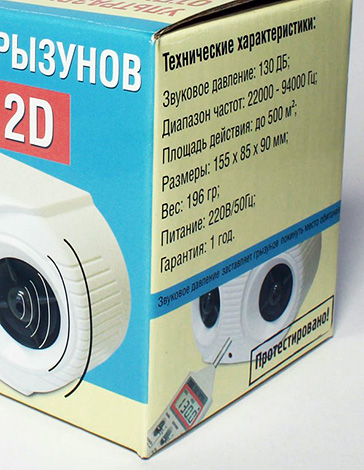
Additionally, when choosing a device, it is useful to consider:
- From what it feeds. If the repeller is powered by batteries, then the emitted ultrasound will be low power;
- How much does the appliance cost. Devices with a price below 1000 rubles. for the most part, they are completely ineffective;
- How the device is positioned. If the description of the device indicates that it is not just an ultrasonic repeller, but also magnetic resonance and electromagnetic, and it repels not only rodents, but also cockroaches, mosquitoes and flies - this is a sure sign of a dummy.
The main problem when choosing an ultrasonic repeller for rats and mice is the inability of an ordinary person to check the characteristics declared by the manufacturer. The point here is that to control the parameters, special measuring devices are needed, but it is impossible to just hear ultrasound and estimate the sound pressure level. Externally working device does not manifest itself.
Unscrupulous manufacturers often use this and indicate on their devices such parameter values that are far from reality. As a result, there is a risk to buy, instead of a reliable device, either an ineffective device or a completely useless Chinese box with a battery-powered LED.
And what in practice?
Under real operating conditions (for example, in a granary), a good device almost instantly causes rats and mice to escape from the place where the repeller is turned on. When testing on laboratory mice, it is noted that they begin to rush about the cell, run away to the farthest corner, throw food, try to hide.

The practice of using ultrasonic devices shows that in many cases, when these devices are used, rats stop entering protected premises or leave them if they had lived in them before. But this is relevant only for effective devices, provided that they are used correctly.
What special studies say about the effectiveness of ultrasound from rats
The results of several practical experiments on "wild" basement rats are known. The essence of the experiments was as follows:
- In one of the rooms of an abandoned building inhabited by rats, rat traps were installed with bait, but with the brackets removed. These rat traps did not kill animals and did not even catch them, but they made it possible to record the fact that the rat was approaching the bait. The rat-catcher worked - that means the animal was definitely coming to her;
- First, the number of rat traps was recorded in the absence of the device;
- Then, the tested repeller for the whole night was switched on in the room, and in the morning the number of rat traps worked was estimated.
The more effective the repeller was, the less rat traps were triggered during operation of the device compared to the period without the repeller (rats ran around the room less).
In such experiments, a lot of devices were tested, and according to the results it became clear that there are quite effective professional tools on the market, as well as outright fakes that do not frighten rats at all. During the operation of some devices, rats did not approach baits at all, while near other devices they quietly fed and went about their “own business."
On a note
In laboratory studies, it was found that rats, constantly under the influence of ultrasound and unable to hide from signals, were in a state of continuous stress, refused food and died after some time.
Here are just a few of the well-proven ultrasonic rodent repellers:
- Bioguard;
- Chiston-2;
- Chiston-2 missile defense;
- TM-315;
- WK-0600;
- UZU-03;
- Spectrum;
- Tornado 800.
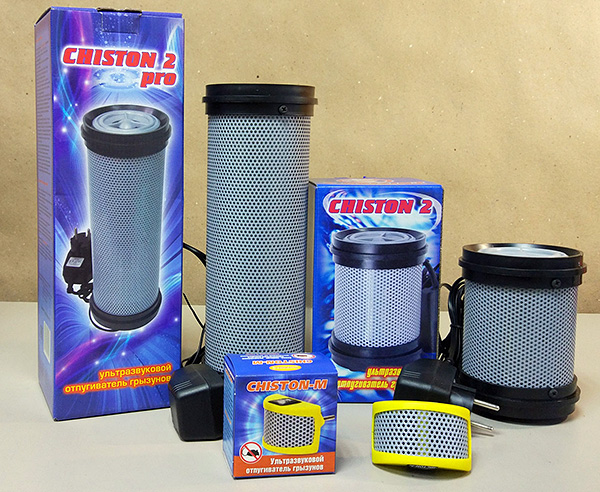
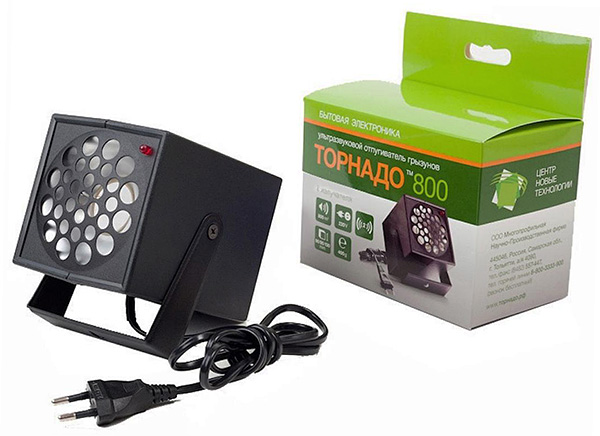
Feedback
“Honestly, I was afraid to turn on the ultrasound in the chicken coop. I even thought of ordering a special safe trap to catch rats. But then he took a chance. And normally, the chickens didn't seem to hear anything at all. And the rats disappeared, I haven’t seen them for a month ... ”
Alexey, Barnaul
Why ultrasound devices sometimes do not work
The main reason that the fight against rats with ultrasound often does not give an effect in practice is the low quality of the devices and the mismatch of their characteristics with those declared by the manufacturer. Simply put, a person can buy, it seems, not the cheapest device, and that, in fact, either does not work at all, or the signals are too weak, or the rats quickly get used to them.
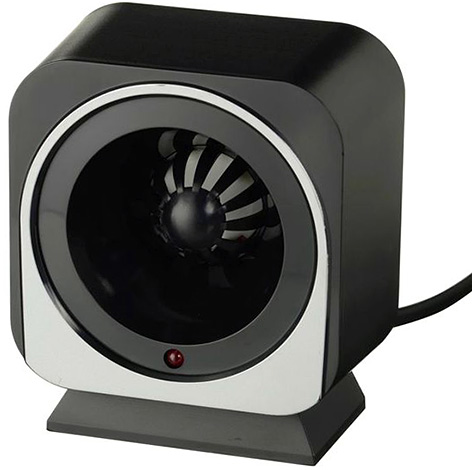
As a rule, the cheaper the repeller, the less likely it will work. Practice shows that if the price of the device is below 1000 rubles, then protection against rats with it will be ineffective.
But there may be other reasons for the lack of result:
- Improper use of the device, when the signal from it can be actively absorbed by surrounding objects, or the device itself is turned on not where it should scare rats and mice (for example, it is turned on in the basement of a large cottage with the hope that the device will expel rodents from all rooms of the house, including the attic);
- The addiction of rodents to ultrasound, even if its frequency is constantly changing, is also possible. If rats, occasionally entering the territory protected by the device, regularly find food here, do not suffer losses (do not fall into rat traps), do not feel other dangers (for example, the smell of a cat), then gradually they get used to the fact that such "raids" are safe , and the ultrasound itself may suffer. When using powerful high-quality devices, this rarely happens - mainly with prolonged continuous use of the repeller.
However, in practice, the main reason for skepticism and negative reviews about ultrasonic rodent repellers is attempts to get rid of pests with the help of the cheapest devices (sometimes even in the form of a keychain), which have practically no effect on rats.
Is ultrasound safe for humans and pets?
For humans, ultrasound is not very high power (up to about 10 watts) is relatively safe. Only very powerful repellers can have an effect, although a person does not understand that this is happening. For example, under the influence of ultrasound during prolonged use of the device in residential premises, people sometimes develop headaches. Therefore, ultrasonic repellers are not recommended for use in residential areas for a long time. Moreover, you can not use them in the bedrooms.

Many pets hear ultrasound well, and it can adversely affect their condition. The most acute reactions to the signals of the device are domestic rodents - rats, mice, hamsters. Dogs and cats also hear the signals of the device well, and in some cases, these sounds can make them stressed.
On a note
Some Chinese battery-powered ultrasonic repellers are described in advertisements as completely safe for any pets. And this is really close to the truth - because of their insignificant power, they do not have a tangible effect on either domestic animals or rodents.
Choosing an effective device
According to the test results and taking into account the feedback from experts, the following models are, for example, sufficiently reliable ultrasonic agents from rats and mice:
- Chiston-2 PRO - its price is about 3000 rubles, the frequency range is 20-70 kHz, the protected area is 450 square meters. m;
- Biostrazh - the price is about 4,500 rubles, the protected area is 850 square meters. m;
- Chiston-2 - costs about 2500 rubles, the protected area of 300 square meters. m;
- Tornado-800 - the price is about 3500 rubles, the protected area is 800 square meters. m;
- TM-315 - 6500 rubles, the protected area of 750 square meters. m
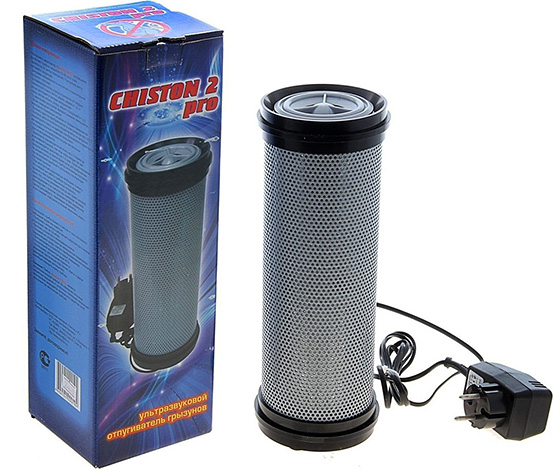
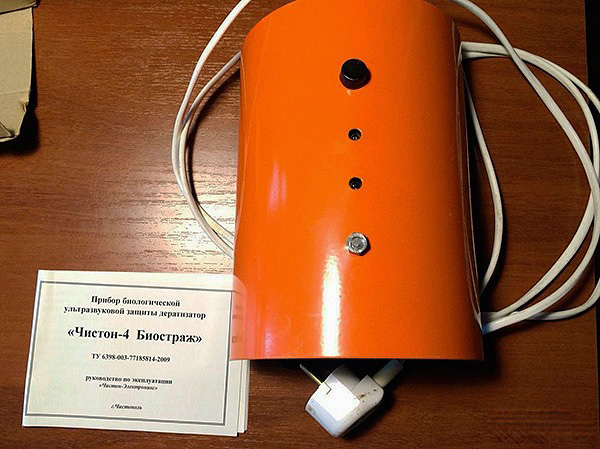
Also, in many cases, WK-0600, Electrocat and other devices with comparable technical characteristics proved to be effective.
Feedback
“I was interested in the question when a huge number of rats were discovered in the country. I read in magazines about the electric cat, this little thing costs 2000 rubles. Operating area 200 squares. I don’t know how the rats felt there, but standing with the electric cat turned on bothered me, because there was an unpleasant squeak. The rats are gone, but the sensations from the device are mixed, the squeak is very unpleasant ... "
Pavel, Moscow
How to apply ultrasound from rats
Ultrasonic repellers are quite simple to operate. The device is plugged into an outlet in the room that you plan to protect from rodents, and it is important to check that nothing prevents the sound from spreading. In an ideal case, large objects or furniture should not be located at a distance of 2-3 meters from the device, since all of them will jam and reflect sound vibrations.
Please note that the protected area for each device is indicated without taking into account the attenuation of ultrasound by interior objects, walls, floors, and ceilings. This means that if you place a repeller in the middle of a large workshop with approximately the same area as indicated on the device, then ultrasound will be more or less effective in almost the entire room. Many small rooms with the same area, but separated even by thin walls, the device can no longer protect, since ultrasound does not penetrate the walls.
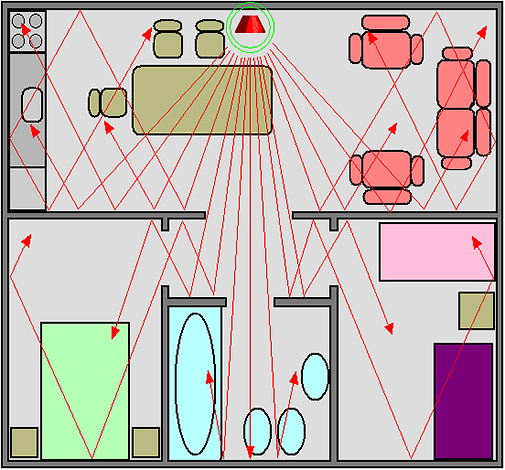
The repeller is recommended to be included only at a time when there are no people in the room and rats are more likely to appear. For example, a device can work 2-3 times a day for 2-3 hours, or only at night. In this case, there will be minimal risk of addiction of pests to the sound.
So a short summary:
- Ultrasound really allows you to scare away rats and mice, provided that it is used correctly;
- The main reason ultrasonic repellers are often ineffective is to buy useless, low-power “toys” instead of high-quality devices, and then premature conclusions that “ultrasound does not work.”
If you have personal experience with using ultrasonic repellers in the fight against rodents - be sure to share the information by leaving your review at the bottom of this page. Whether this or that device helped you, as it was called, whether it caused discomfort during work, how the rats (or mice) reacted - in general, any practical information will be interesting.
Testing ultrasonic repellers of mice and rats
Recall of a person about his experience in using cheap rodent repellers

